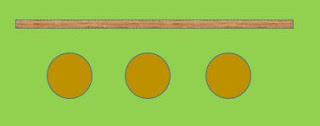Facebook suggests revisiting the past year through pictures, I prefer books.
2015 began with something I'd bought myself for Christmas, Thomas Sugrue's The Origins of the Urban Crisis: Race and Inequality in Postwar Detroit. I was following up a reference to it as a source on homeowners associations and how they were a tool for enforcing racial segregation. MCL didn't have a copy and it was the holidays, so I figured what the hell and shelled out the bucks.
This turned out to be a great read and it changed how I think about segregation. Sugrue hammers the point that the ghetto wasn't just a function of racism. It was also a function of economic restructuring, both geographically (jobs moving from cities to suburbs) and vertically (money moving away from low skilled/low education to high skilled/high education). Per Sugrue,
Detroit's postwar urban crisis emerged as the consequence of two of the most important, interrelated, and unresolved problems in American History: that capitalism generates economic inequality and that African Americans have disproportionately borne the burden of that inequality.What homeowners associations did at the neighborhood level, suburbs did at the municipal level. That lead me to Kenneth Jackson's, Crabgrass Frontier: The Suburbanization of America, and Clay McShane's Down the Asphalt Path: The Automobile and the American City. McShane describes how the automobile made suburbs accessible to both manufacturing and the middle class, while Jackson describes how that access was limited to whites. I like McShane's focus on how social goals drive the bus. He's talking about cars, but I think it applies just as much to segregation:
Besides these narrowly economic functions, the automobile seemed to promise a way for turn-of-the-century Americans to get some of their most cherished social goals. In a sense, there was a "social demand" for the automobile, along with the economic one. The new middle class wanted other status objects in addition to suburban homes. The automobile, like the street railway before it, promised to ease suburban flight. Suburban historian Robert Fishman has pointed out the continuity: "The automobile has been essentially a tool in the attainment of a deeper goal which pre-dates the automobile era: the suburban ideal."The flipside to that was the ghetto. Going back to Sugrue,
The "ghetto" was not simply a physical construct; it was also an ideological construct. Urban space became a metaphor for perceived racial difference. Whites created a cognitive map of the city based on racial classifications and made their decisions about residence and their community action in accordance with their vision of the racial geography of the city. They established "invisible stone walls of prejudice," and through defensive activity ensured that despite their invisibility those walls were well known to black and white Detroiters. In the very act of defining the boundaries of the "ghetto," whites also continually defined and reinforced the boundaries of race.The last thing I'll mention is Beryl Satter's Family Properties: Race, Real Estate, and the Exploitation of Black Urban America. She provides an excellent breakdown of how the ghetto wasn't just a function of exclusion, it was about how the real estate industry (and courts which refused to enforce basic consumer protections) handled African Americans. When blacks could find housing open to them, they had to pay extortionate prices several times the "white" price. Through land contracts, unscrupulous sellers retained title to properties but left black "owners" on the hook for building repairs and code violations. For old, dilapidated housing, especially in a city with a corrupt inspection system <cough>Chicago</cough>, those costs could be extreme.
And now for why.
Portland has a housing shortage, and more generally we're struggling with managing growth. 20th century suburbanization provides a clear path to resolving those problems: Cater to status, even if that means tacit racial segregation. Cater to class, even if that means making lower income people disappear. And let everyone who doesn't fit a neighborhood's mold go to hell.
I want to understand how this happened in the past to better try avoiding it now.

